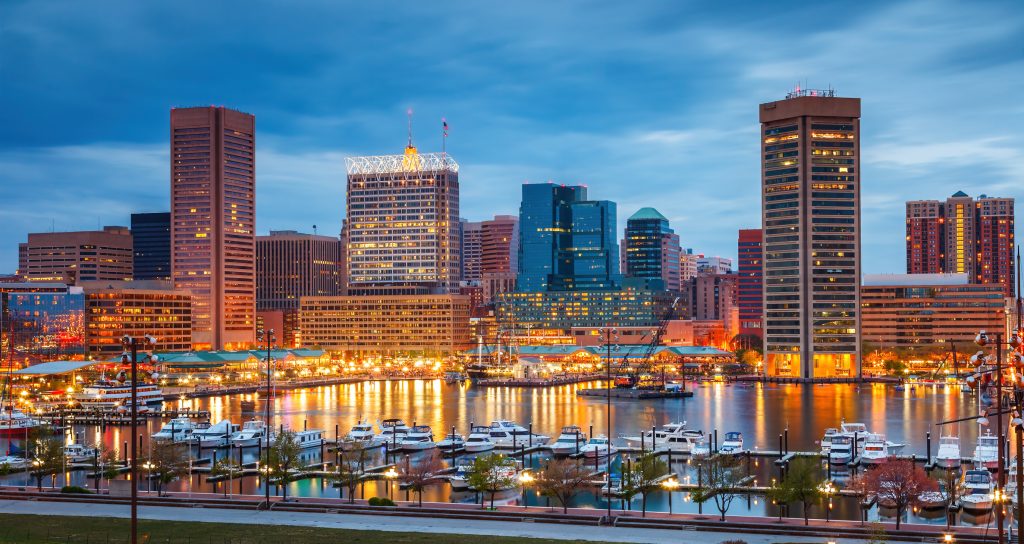(The Center Square) – The closure of the Port of Baltimore caused by the ship collision that collapsed the Francis Scott Key Bridge will likely have a greater impact on the local economy, but the ultimate strain may be on increased and longer ground transport, according to supply chain experts.
The Port of Baltimore ranks first in the nation for importing and exporting automobiles, light trucks, farm and construction machinery, and imported sugar and gypsum.
In 2023, the port handled nearly 850,000 automobiles and light trucks, the most in the U.S. The port also ranks second in the nation for exporting coal and sixth for importing coffee. The port leads the nation for roll-on/roll-off cargo.
The port’s proximity to the Midwest, especially Michigan, the epicenter of the car industry, makes it ideal for transporting automobiles and farm equipment.
According to the state of Maryland, “The Port of Baltimore generates nearly $3.3 billion in total personal income and supports 15,330 direct jobs and 139,180 jobs connected to Port work. The Port also generates more than $395 million in taxes and $2.6 billion in business income. It serves over 50 ocean carriers making nearly 1,800 annual visits,”
Tinglong Dai, professor of operations management and business analytics at Johns Hopkins University, believes the port closure will be “minimal and transitional,” and the economic impact will be localized.
The professor said since the crash, some ships have already been rerouted, which he cited as an example of flexibility in the industry.
Echoing Dai’s optimism is Dr. Philip T. Evers, associate professor of supply chain management at the University of Maryland. He said since the pandemic, supply chain firms have done a better job preparing for these types of events, underscoring that “many supply chain firms have focused on risk and resiliency since Covid. They may be able to minimize the cost hikes.”
Evers explained to The Center Square that cargo ships must pass Norfolk before reaching Baltimore, which would offer a convenient alternative for ships to load and offload.
Joe Harris, senior director of media relations for the Port of Virginia, told The Center Square that within hours of the crash, one of the terminals at the Virginia International Gateway had processed a rerouted container ship, saying they “anticipated these diverted volumes to increase.”
Experts believe the short- and long-term issue will be the bridge and rerouting of ground transportation, which could add additional strain to the already congested I-95 corridor. Trucks utilized the 1.6-mile Key Bridge – it carries I-695 traffic on the southeastern loop of Baltimore – as a quicker way to bypass Baltimore, and it was vital to trucks carrying hazardous material since they were prohibited from using any of the tunnels around the city.
Nick Klein, vice president of sales at OEC Group’s Midwest Region, specializing in logistics, is concerned about the trucking industry and how longer transit may affect costs.
“The bridge collapsing will further strain the trucking industry and in turn hike up prices due to longer transit times,” Klein told The Center Square. “Ships will be routed to Norfolk VA Port or New York/New Jersey Ports and importers/consumers will pay more for trucking from Norfolk or New Jersey to the Metro Baltimore area, and beyond.”
During a press conference Tuesday afternoon, Maryland Gov. Wes Moore could not provide a timeline for when operations at the Port of Baltimore will resume. The Port of Baltimore has halted services indefinitely.
Benjamin Schafer, professor of civil and systems engineering at Johns Hopkins University, believes the cleanup effort to open the shipping channel could take weeks if not months. He anticipates reconstructing the bridge could take several years, costing hundreds of millions.
Originally published by The Center Square. Republished with permission.
For more from Budget & Tax News.
For more public policy from The Heartland Institute.
